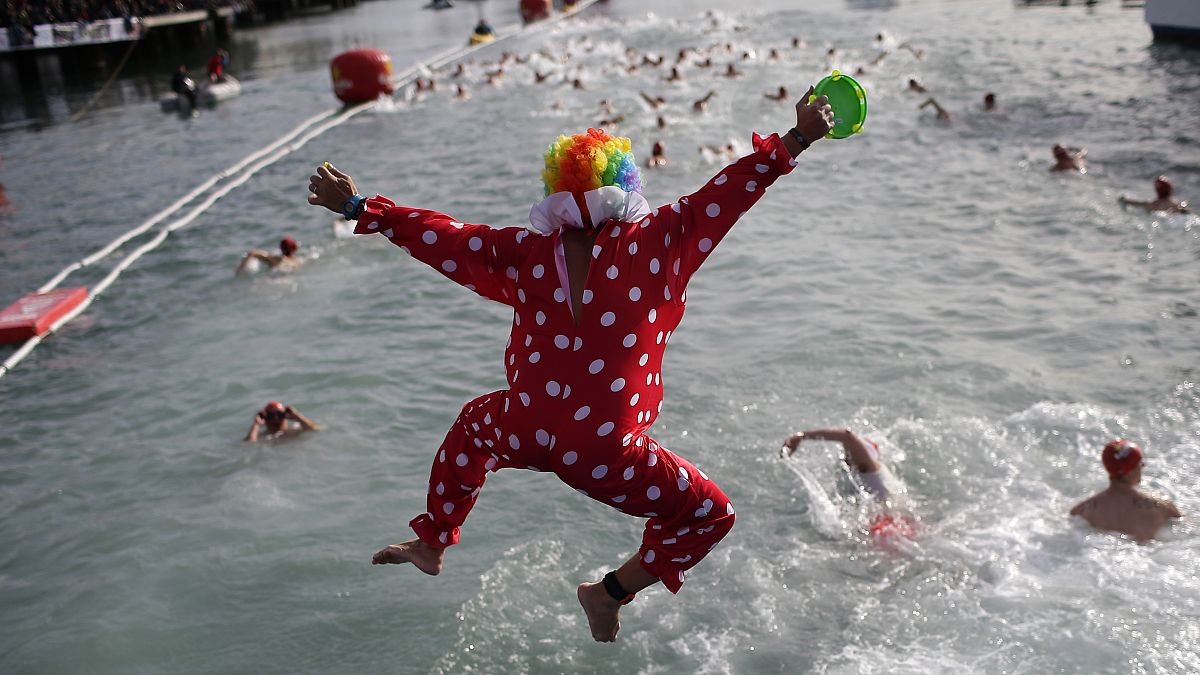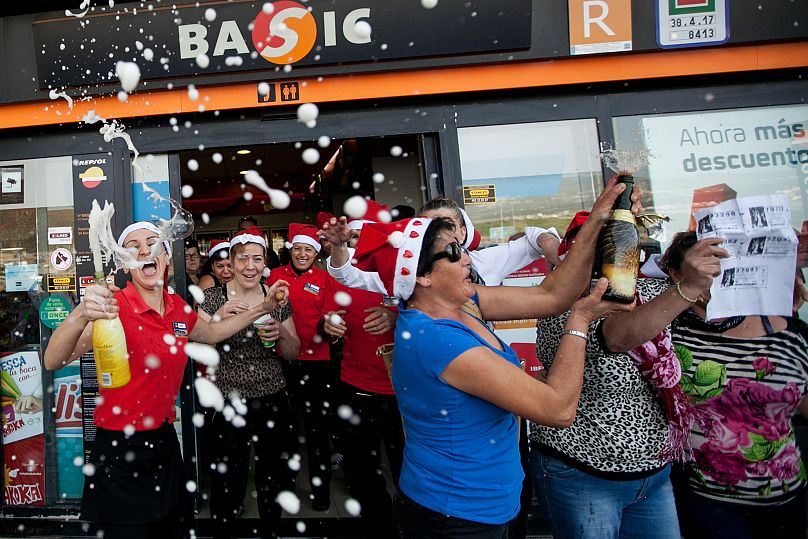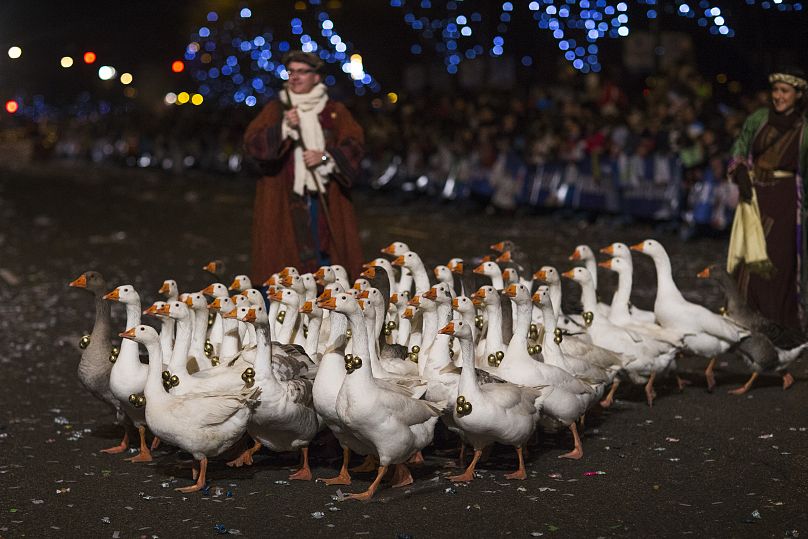Spain’s boisterous take on the holiday could almost be mistaken for irreverence. It's summed up by the caganer or defecating shepherd, which can be found in nativity scenes across the country.
There are no half measures when it comes to the fiesta in Spain, so it’s no surprise the country hosts one of the most extensive Christmas celebrations on the planet.
Even as a sixth wave of the pandemic washes over the country, its citizens are making the most of the season, with bars and restaurants remaining open and office drinks going ahead as if Omicron were a computer chip and not a new and highly contagious strain of the virus.
This widespread business-as-usual approach is being labelled the Ayuso effect – Isabel Díaz Ayuso being the Madrid regional president who won a landslide victory in the elections last May by appealing to the nation’s devotion to tapas and cañas – beers and snacks.
The (Christmas) show must go on, but it wasn’t always thus. It actually took a while for Christmas to catch on here as, back in 529 AD when Justinian the Great ordered the entire Roman Empire to celebrate the birth of Jesus on December 25, winter solstice festivities already brightened the winter months between December 20 and 23.
In fact, it took at least 100 years for Spaniards to embrace the new fiesta, which became meshed with a number of ancient folkloric traditions.
Lacking the solemnity of the Anglo-Saxon Christmas, Spain’s boisterous take on the holiday could almost be mistaken for irreverence. For instance, one of the figures in the ubiquitous nativity scenes that adorn the square of every Spanish town is the caganer or defecating shepherd, who can be found crouching at the back with his pants down, wearing a Catalan peasant cap on his head.
A number of Spanish carols are also somewhat rowdier than the choral favourites sung religiously every year elsewhere, probably because many of them have been adapted from lively rural ditties that date back to the 15th century.
What are Spain's Christmas traditions?
Irreverent or otherwise, the party gets started in earnest on December 8, which has been marked as the Day of the Immaculate Conception since 1644 – not the conception of Jesus as you might think, but of his mother, the Virgin Mary.
Twinned with the Day of the Constitution on December 6, the holiday gives Spaniards the perfect excuse to down tools for the better part of a week in order to recharge their batteries for the unrelenting round of family lunches and dinners closer to the 25th.
The main family get-together takes place on Christmas Eve rather than Christmas Day except for in Catalonia. And, depending on the region, the feast may consist of a roast or fish and, more often than not, a wide range of seafood, with marzipan and nougat confectionary and sweetmeats to round it off – all prepared after a day’s work as the 24 is not a public holiday.
There are, of course, variations on this. In the cooler north, Galicia is partial to baked cod, served with winter vegetables such as cauliflower or cabbage while Asturias is fond of roast goat and the Basque Country, snails and cardoons (basically a thistle), washed down with quantities of mulled wine. Further south, in Murcia and Andalusia, roast chicken and even turkey are frequent candidates for the yuletide menu.
For those who like to end the meal with a bang, a full-blown firework display in the backyard is Spain’s answer to the Christmas cracker. A more serene alternative is the traditional Misa de Gallo or Rooster’s midnight mass.
This is the time of night that children in Anglo-Saxon countries look skywards in the hope of catching a fleeting glimpse of a sleigh but Santa Claus is not the chief bearer of gifts here. In fact, he didn’t stop by at all until the 1980s and nowadays generally deposits a token offering, leaving the main job to the three Kings who come laden with toys on the eve of the Epiphany on January 5.
The northern Basque region and Galicia, however, have their own version of Santa, both coal mongers, known respectively as Olentzero and Apalpador, who live the rest of the year deep within the surrounding forests.
What about the New Year?
New Year’s Eve is celebrated once again with extended family and a meal culminating in the crushing of 12 grapes into anxious mouths as the clock strikes midnight – one grape for each chime – representing luck for each month of the year ahead. Once that sacred tradition has been observed, the younger family members peel off to party until dawn.
At this point, you might think there would be a collective groan of enough is enough. But, just as northern Europeans are taking down their Christmas decorations, Spaniards are cranking the party back up with the procession of the three Kings – or cabalgata – which wends its way through the streets of every city and town in the country, its floats carrying children who hurl boiled sweets at the revellers below.
In a bid to exceed expectations, Madrid has gradually introduced an increasing number of animals into the parade, usually horses, sometimes geese and last year camels. However, if the new animal protection bill gets through parliament, this is one tradition that will soon be stamped out, along with the blackening of local faces to play King Baltazar; last year Alicante was slammed as racist for a practice that took root during the Franco dictatorship when there simply weren’t many people of colour about.
With the parade over, children hurry home to leave out a shoe for the three Kings to fill – hopefully not with coal. The origins of this tradition lie in the story of two friends of Jesus who took pity on the fact he had no shoes and decided to give him their own which they cleaned and set out to dry, a gesture the Kings are said to have rewarded by filling the shoes with presents.
King’s Day on January 6 is a relatively quieter affair, spent visiting family and eating roscón – a bun in the shape of a large doughnut, which contains two ‘surprises,’ a plastic baby Jesus and a bean. Those chancing on the baby are destined to become kings themselves while the bean means buying the roscón the following year.
Adorned with colourful candied fruit symbolising the jewels in the Kings’ crowns, the roscón actually pre-dates Christmas as it was typically served as far back as the 2nd century AD for Las Saturnales fiesta that honoured the god Saturn and marked the end of the darkest period of the year.
And so the Christmas marathon draws to a close, but as the new year gets underway, so do the many other fiestas celebrating a host of saints and virgins. In fact, you could say that, in Spain at least, the party has only just begun.


